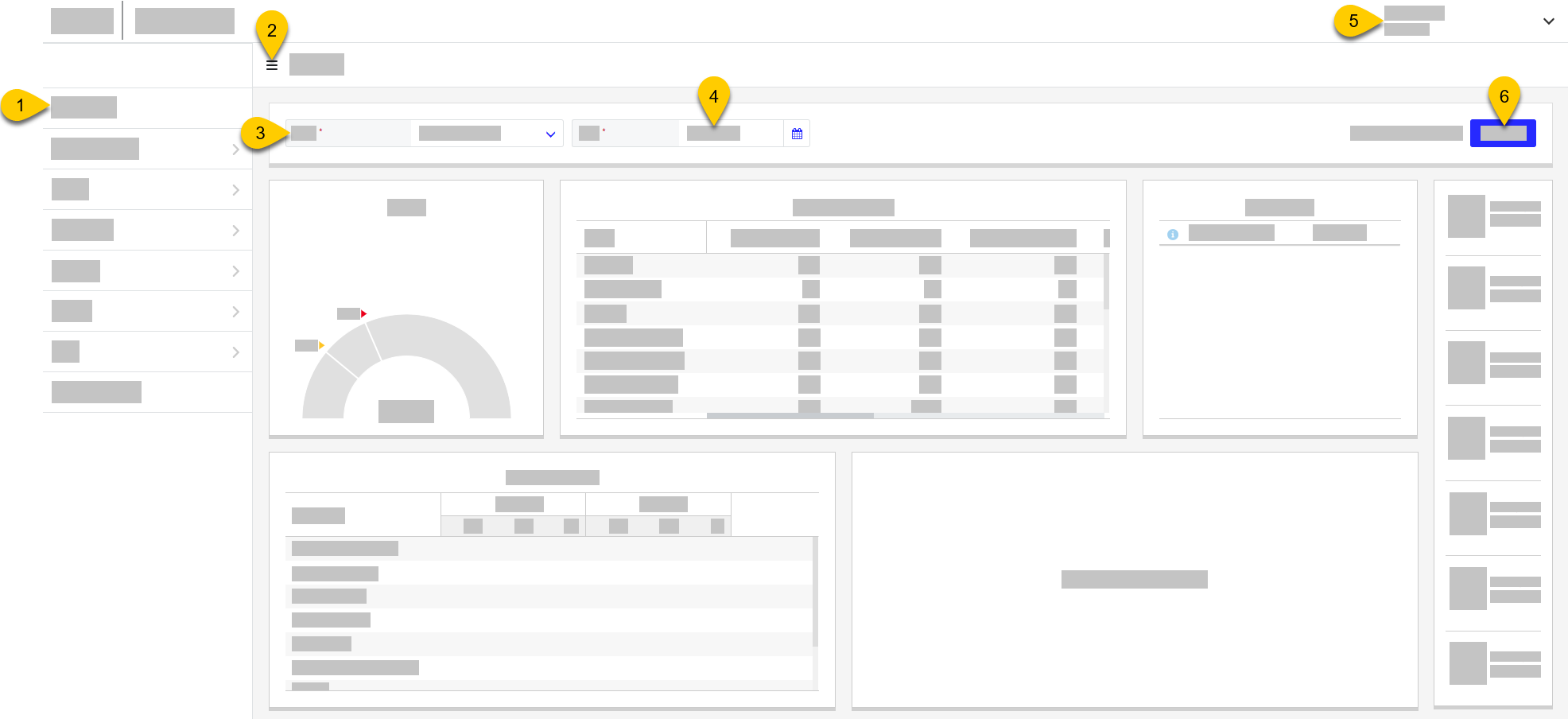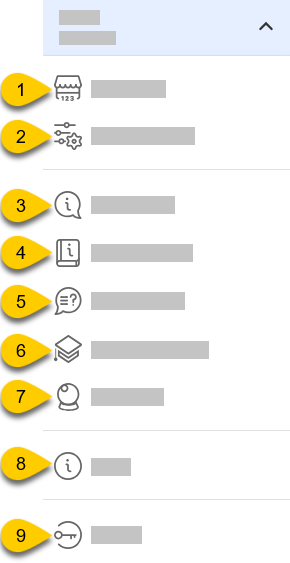Getting Help When You Need It
Back Office contains a lot of useful functions. To assist, there are built-in help articles, supplementary training, and user/product information available throughout the product. Following is an overview of how to navigate the main page:
 |
1 | Utility Panel | Each available utility for the current logged in user is listed here. |
2 | Expand/Collapse | Select to expand or collapse the utility panel. |
3 | Store | Select the active store. |
4 | Date | Select the date. |
5 | User Menu Dropdown | Select to access the information and help links outlined in User Menu Dropdown. |
6 | Refresh | Select to refresh the page. |
User Menu Dropdown
 |
1 | Active Store | A user's Active Store is the site selected by default in a details page (the page that appears when performing a function, such as selecting Add Inventory Count) and an EOD task list. Select this option to change the Active Store for the current session. An Active Store selection lasts until the user logs out. |
2 | Select Menu Type | Select the style of menu from the following available style options:
|
3 | What's New | Links to the latest release notes with information on any new features or improvements. |
4 | Getting Started | Links to the Getting Started page in the Product Documentation. |
5 | Product Help | Links to the Back Office section of the Product Documentation, which contains topics for each utility. |
6 | Training Academy | Links to coursework, videos, and supplementary training materials on the Academy. |
7 | Get Support | Displays whom to contact with additional questions about the functionality of Back Office. |
8 | About | Displays the name and username of the currently logged in user, the company information, and software versions of the user interface, database, operating system, and browser. |
9 | Log Out | Logs the current user out. |